9 Artworks From Artnet’s Gallery Network That Our Experts Are Loving This Week
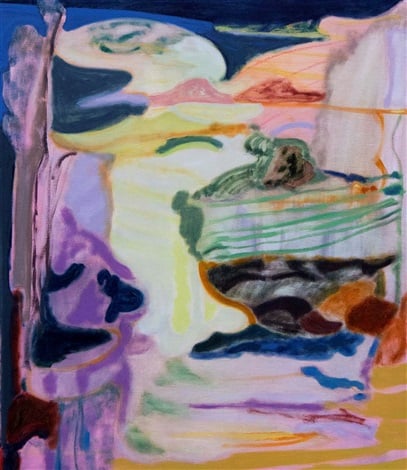

Artnet Gallery Network

Every week, we explore the thousands of galleries on the Artnet Gallery Network to highlight the spaces and artworks inspiring us right now. Take a look at our latest picks below.
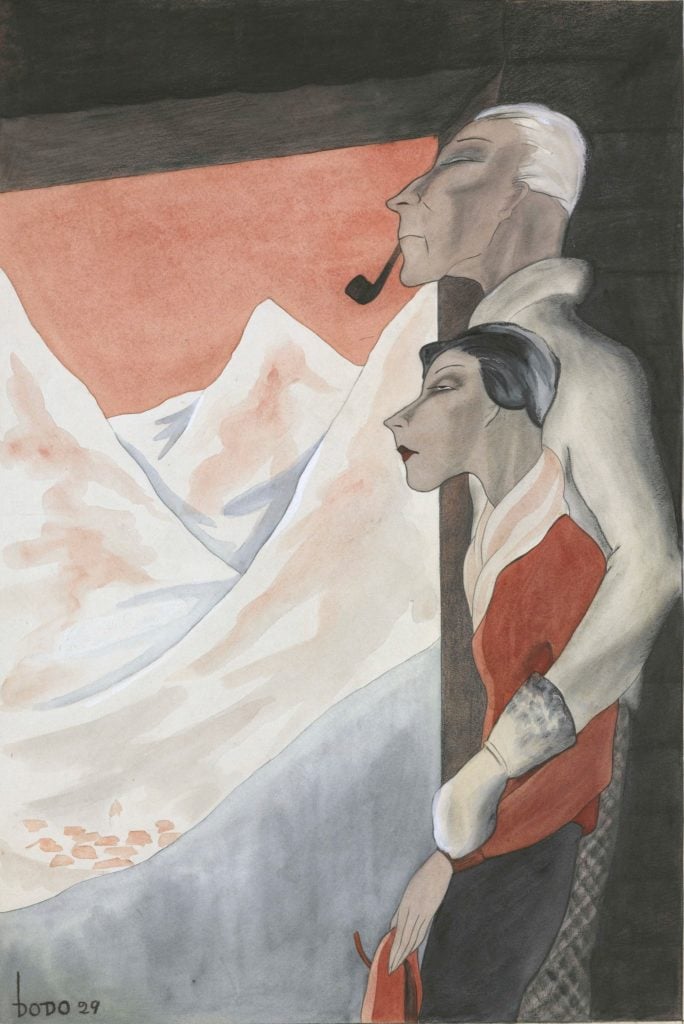
Dodo, Honeymoon (1929). Courtesy of Kunkel Fine Art
This romantic drawing was created in 1929 by the German artist known as simply as Dodo — it’s thought to be a self-portrait of the artist and her husband. Born as Dörte Clara Wolff in 1907, Dodo married the Jewish lawyer and notary Dr. Hans Bürgner in 1929. I like the intimate atmosphere and sense of wedded harmony that this drawing radiates.
—Alexandra Schott
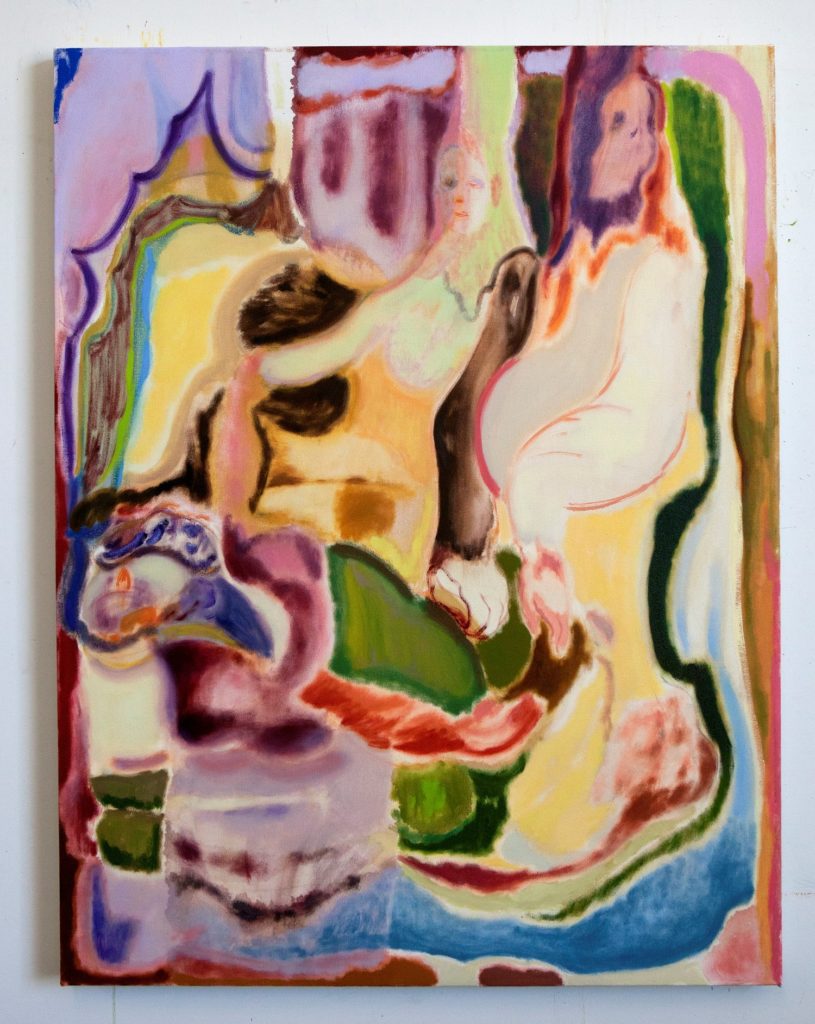
Maja Ruznic, Soil Whisper (2017). Courtesy Tayloe Piggott Gallery.
I’m a big fan of Bosnian-born artist Maja Ruznic’s works. The way she skillfully dilutes her paint into the linen canvas and loosely outlines the bodies of two figures reminds me of a watermarked old photograph. Ruznic refers to this technique as “the drunken hand”. Right now her work is on view in a group show at Upper East Side gallery, Harper’s Apartment until February 29th.
—Cristina Cruz
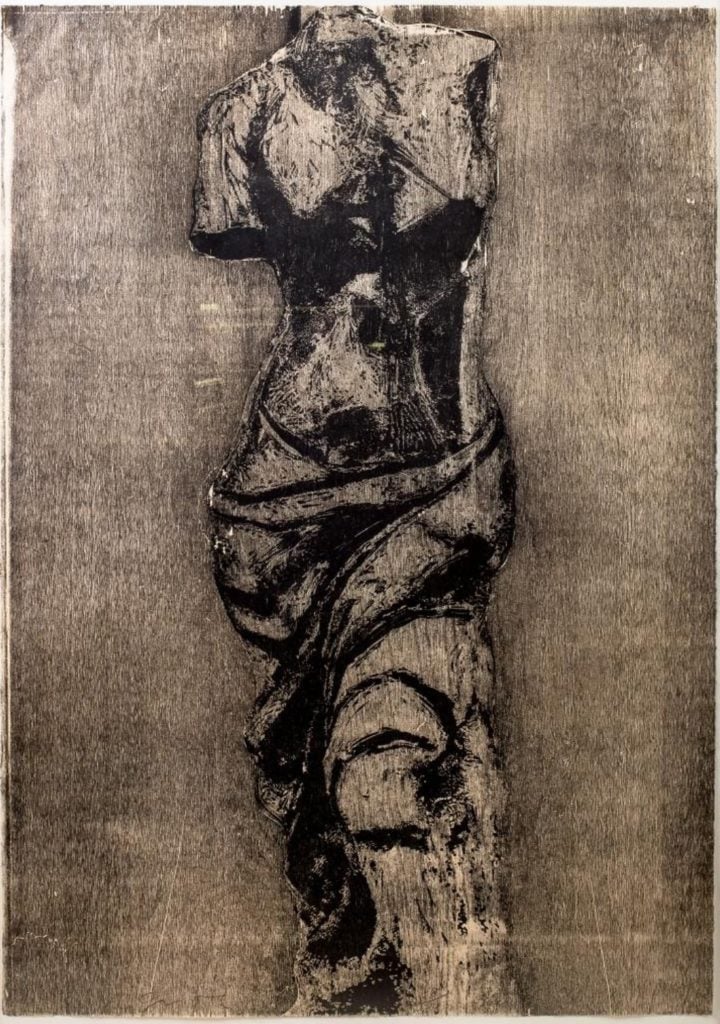
Jim Dine, Untitled (Single Venus) (1984). Courtesy F.L. Braswell Fine Art.
Jim Dine has a way of reimagining the familiar. Here, it’s the Venus de Milo one of the most famous sculptures of the Hellenistic period, but pictured headless and stripped of any implied narrative.
—Karin Petit
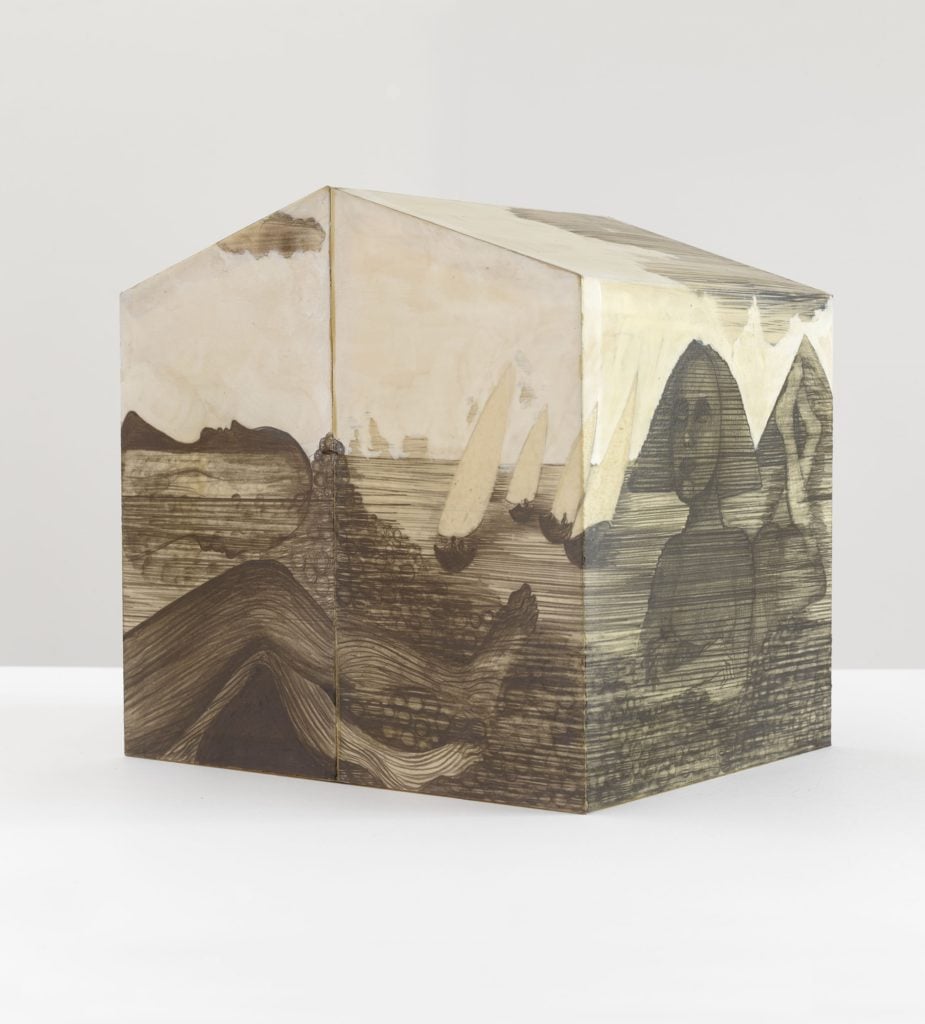
Sandra Vásquez de la Horra, Fata Morgana (2019). Courtesy of Lullin + Ferrari.
Sandra Vásquez de la Horra’s Fata Morgana fully lives up to its title claim: it deceives the viewer in its visually confusing combination of the historical with the surreal. The inexplicable pair of naked legs stretched out towards the relaxed-looking Sphinx do not seem to disturb her sense of serenity. And there is no telling who the oversized head reflected in the water belongs to. The whole uncanny scene is imbued with a mystical calm where anything is possible.
—Miriam Minak
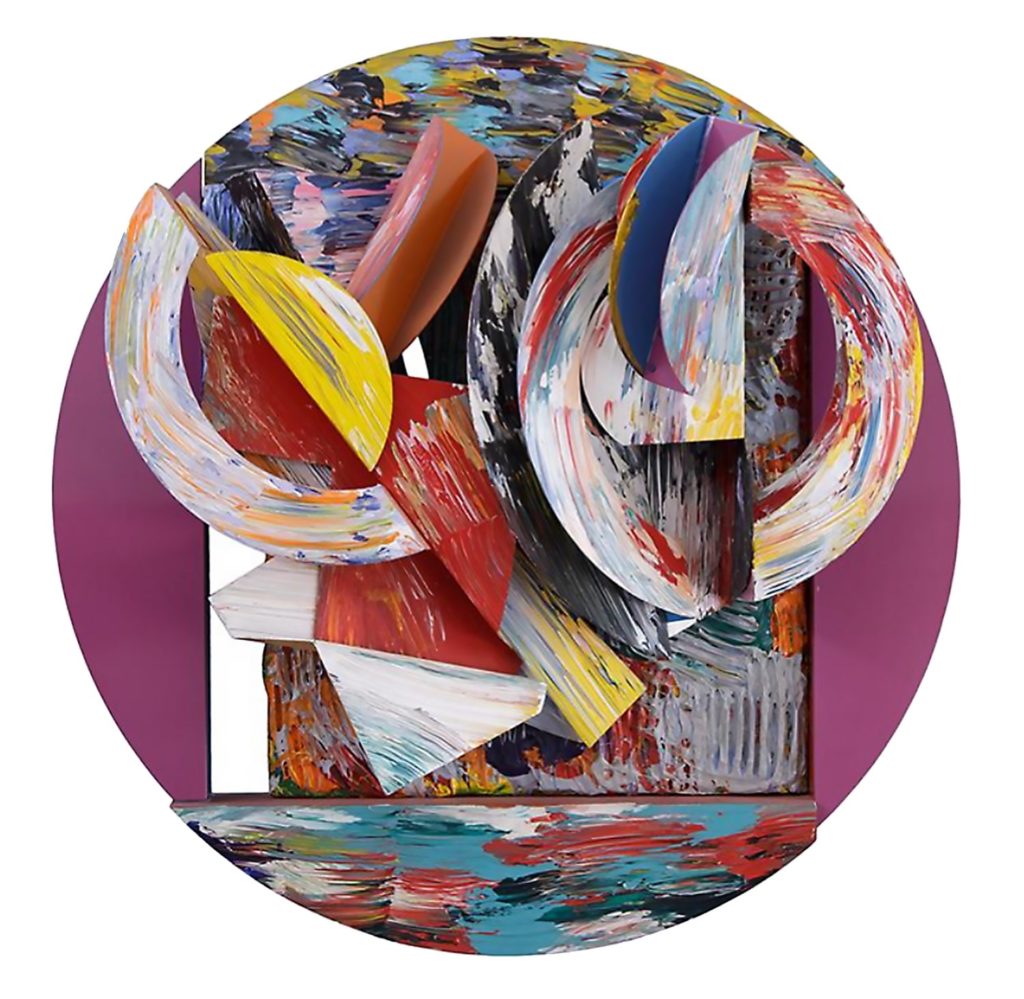
Sam Gilliam, Clarinet (circa 1980). Courtesy of Emily Friedman Fine Art.
Sam Gilliam is best known for testing the boundaries of painting through his unconventional manipulations of canvases. This particular Gilliam work stood out to me because of its visual texture and sculptural elements with expressive brushstrokes that evoke a sense of movement.
—Qadira Farrington
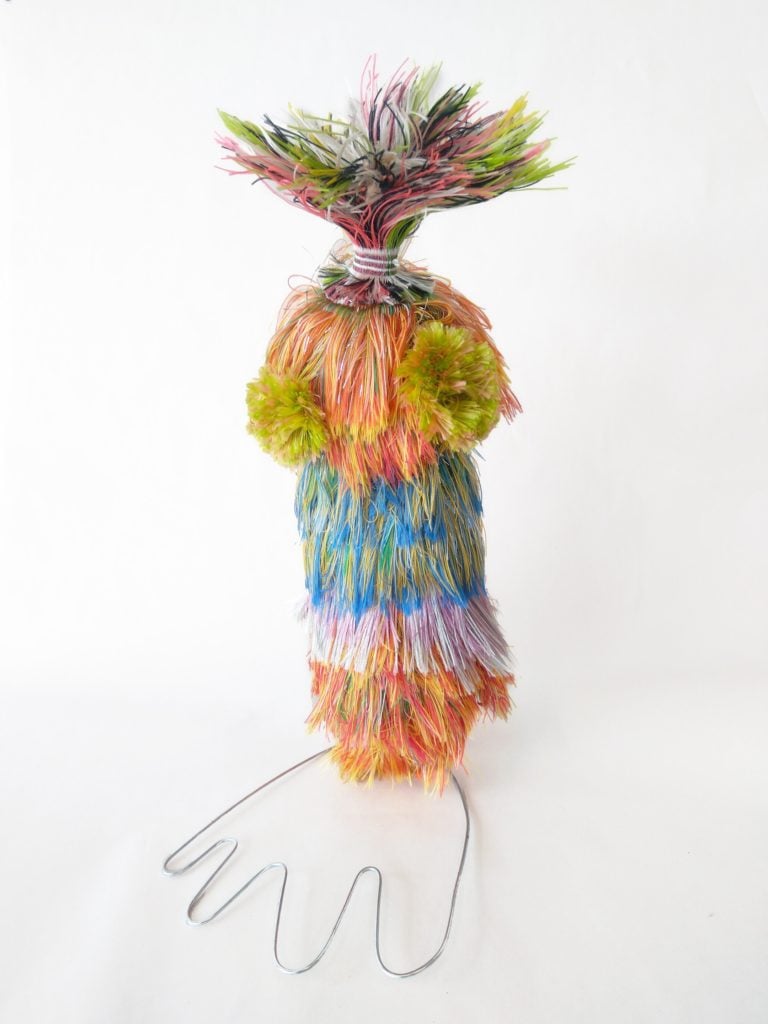
Stefano Ogliari Badessi, Trabubu VI (2019). Courtesy of The Directed Art Modern.
Stefano Ogliari Badessi’s work takes on many forms, largely dependent on the found materials he’s chosen to create with. His “Trabubu” series are a particular favorite — these playful anthropomorphic creatures are made of fringed silk, and clearly love to dance. Their colors and shapes could exist in many cultural celebrations.
—Santiago Garcia Cano

Patrick Caulfield, Lampshade (1969). Courtesy of RAW Editions.
British artist Patrick Caulfield is known for his simple, pared-down depictions of everyday objects and interiors. This 1969 screenprint of a lampshade takes something mundane and uses it to hint at the fundamental nature of every artist’s work — coloring and manipulating the light that enters the human eye.
—Sara Carson
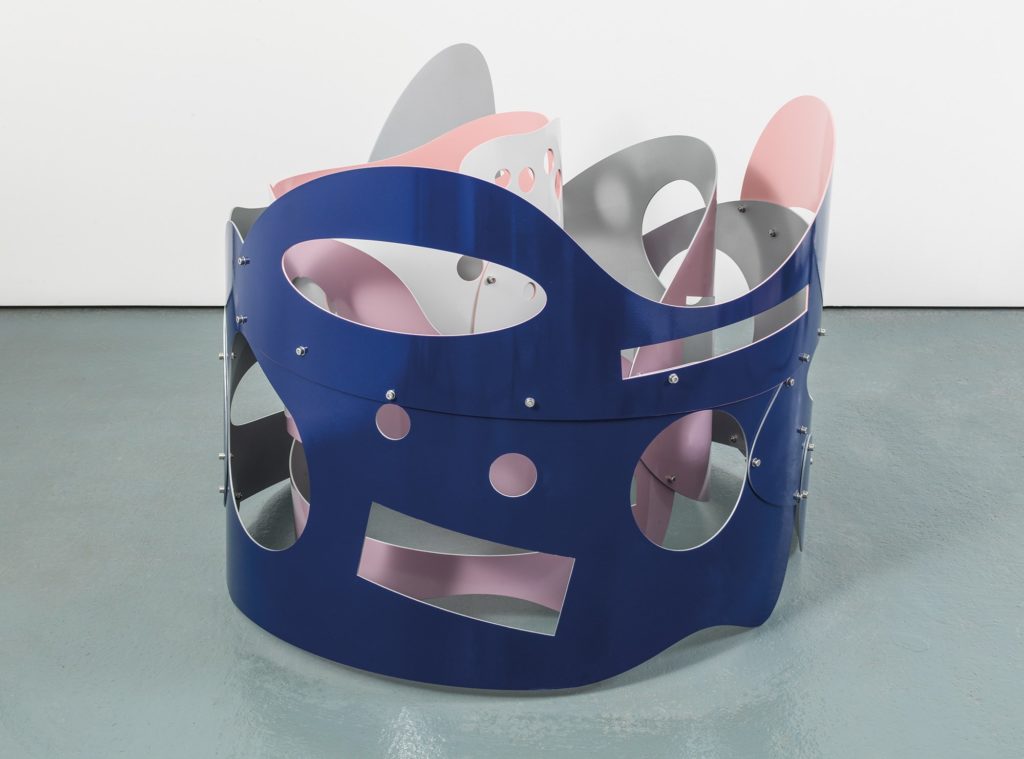
Jeff Lowe, Dido’s Aria (2019). Courtesy of Pangolin London.
These large scale sculptures are both playful and industrial and engage space and volume in a delightful balance. As the viewer steps closer to the sculptures to come alive as the sheets of aluminum curve around each other.
—Tara Wyant
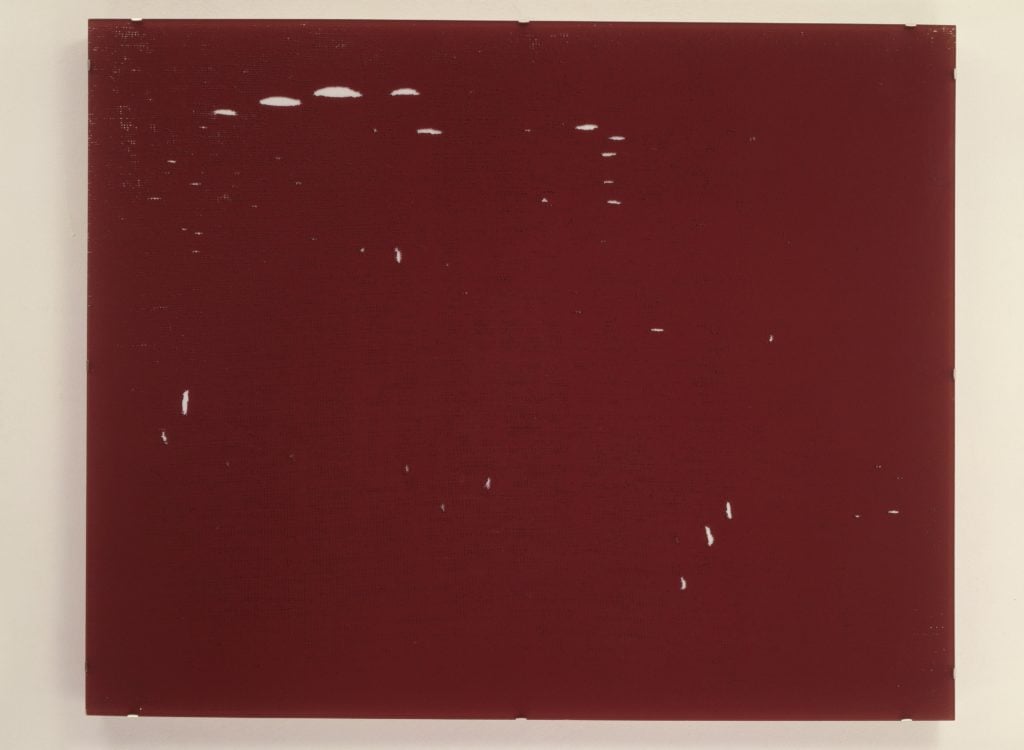
Rosemarie Trockel, Untitled (Mottenbild) (1993). Courtesy of Galerie Tanit.
The title of this conceptual artwork by German artist Rosemarie Trockel implies that the artwork has been created by a moth (motten means moths in German). Looking at the delicate but seemingly accidental traces of white across the canvas, one can imagine a moth fluttering, marking its traces on the surface of the canvas.
—Tobias Molitor